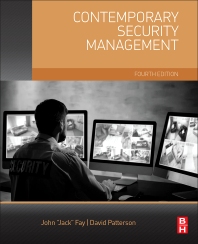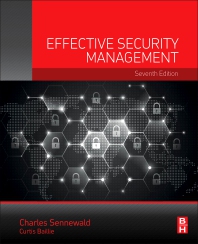Leadership & Management
Leadership lessons at the movies
What security leadership lessons can be learned from watching movies.

jirkaejc / iStock / Getty Images Plus via Getty Images
In 2011, Dave Logan, John King and Halee Fischer-Wright introduced “tribal leadership,” in which members of an organization cluster together based on shared beliefs and outlooks. So while the security, marketing and operations departments may have their unique cultures, employees will naturally gravitate toward like-minded people beyond their division.
Each tribe — which may contain 20 to 150 people — occupies a specific stage, according to this theory.
Stage 1 tribes believe “Life sucks, and so does this organization.” These members represent the most toxic people in the workforce, as well as society.
In Stage 2, the tribe evolves slightly. Life doesn’t suck, per se, just their life. Members are typically jaded, bitter, disengaged and unaccountable.
Stage 3 members believe that they are great but most of the rest of the organization is worthless. This is the “I’m Great (and You’re Not) phase, characterized by goal-driven, ambitious people who are only out for themselves. While they may achieve excellent personal results, they often undermine corporate culture.
At Stage 4 — “We’re Great” — the tribe approaches self-actualization. They produce excellent results working as a team, eschewing office politics and self-aggrandizement. This often is the highest sustainable level of tribal evolution.
In Stage 5, “Life Is Great.” The tribe works seamlessly and altruistically to produce benefits or innovations that better the world. Reaching this sublime level is rare and transitory.
I recently took an online Risk 2 Solution course taught by Dr. Paul Johnston, an Australia-based behavioral scientist. He led the class through an excellent assessment of Tribal Leadership — during which time I learned that he is a film buff.
On that note, I have selected movies that closely align with the five stages of Tribal Leadership, along with suggestions on how the protagonist(s) can advance to a higher stage.
Stage 1: “Life sucks”
Fight Club: The unnamed narrator’s job is to perform cost-benefit analyses to determine whether his company should do a recall of products. Interestingly, he works for compliance, but tries to undermine the organization as a toxic example of ultra-consumerism by placing profit over life. His “we suck” attitude pertains not only to the office, but to corporate America and consumerism in general.
Getting to Stage 2: Considering he just blew up half the city, the outlook isn’t good.
Stage 2: “My life sucks”
American Beauty: Protagonist Lester Burnham feels enslaved to his job as an advertising executive. In fact, clever cinematography provides imagery such as Lester’s reflection in a computer monitor with streams of data, making him look like he’s behind bars. In the director’s commentary track on DVD, Sam Mendes talks about intentionally creating shots at the office that suggest jail cells. It fits with the movie’s overall theme of imprisonment and escape. The “My life sucks” attitude goes way beyond the office — it permeates his entire life.
Getting to Stage 3: If we could rewrite the ending, Lester would reassess his life, including finding a job that gives him purpose.
Stage 3: “I’m great (and you’re not)”
The Social Network: Jesse Eisenberg portrays Mark Zuckerberg as the ultimate arrogant executive, who takes sole credit for creating Facebook and demeaning the efforts of his various colleagues, including the Winklevoss twins and Eduardo Saverin. He is supremely selfish and shows contempt for anyone who questions his greatness, as in the scene when he rails against a lawyer in a deposition:
I think if your clients want to sit on my shoulders and call themselves tall, they have the right to give it a try — but there's no requirement that I enjoy sitting here listening to people lie. You have part of my attention — you have the minimum amount. The rest of my attention is back at the offices of Facebook, where my colleagues and I are doing things that no one in this room, including and especially your clients, are intellectually or creatively capable of doing.
Getting to Stage 4: The real Zuckerberg may have gotten to Stage 4 by working with a team to build much of the social media landscape, while amassing many enemies along the way.
Stage 4: “We’re great”
Moneyball: Though it takes a while, Brad Pitt’s Billy Beane eventually rallies management around his sabermetric method of rebuilding the Oakland A’s baseball team. They battle the baseball orthodoxy that relies on assessing players using subjective factors, such as drive, intelligence, and hustle. It’s the A’s against the baseball world!
Getting to Stage 5: With everyone buying in, they win the World Series.
Stage 5: “Life is great”
Apollo 13: Astronauts who have experienced a catastrophic oxygen tank explosion race against time to work with staff at mission control to return to Earth safely. The NASA flight director inspires his team — calling them a great collection of minds — to work together, creatively, to jury-rig a workable way home for the astronauts. He appeals to their extraordinary abilities in his appeal to collaborate quickly and effectively. They achieve the virtually impossible. Quintessential “Everything is great.”
Remaining at Stage 5: The NASA team could have stayed at the level for a while based on the herculean effort, wondrous results, and the public adulation. But the event that created this cohort was probably a one-time situation for most of the participants.
When I asked Johnston his opinion on my film characterizations, he one-upped me with a character who he says occupied all five stages among several movies: Anakin Skywalker. He was a child slave with little hope (Stages 1 and 2), a cocky young man itching to become a Jedi Knight (Stage 3), and a young Jedi Knight in training eager to join fellow guardians of peace and justice (Stage 4). And Stage 5? Johnston contends it’s when Anakin is lured to the Dark Side by where he can “realize limitless potential, bounded only by imagination and commitment.”
Johnston takes the Star Wars metaphor further: “Understanding the complexities of cultural dynamics within a team or organization is key, as this is the “force” that can be either be used to create a strong, positive culture or can lead to the dark side of an ego-driven environment.”
May the workforce be with you!
Looking for a reprint of this article?
From high-res PDFs to custom plaques, order your copy today!









